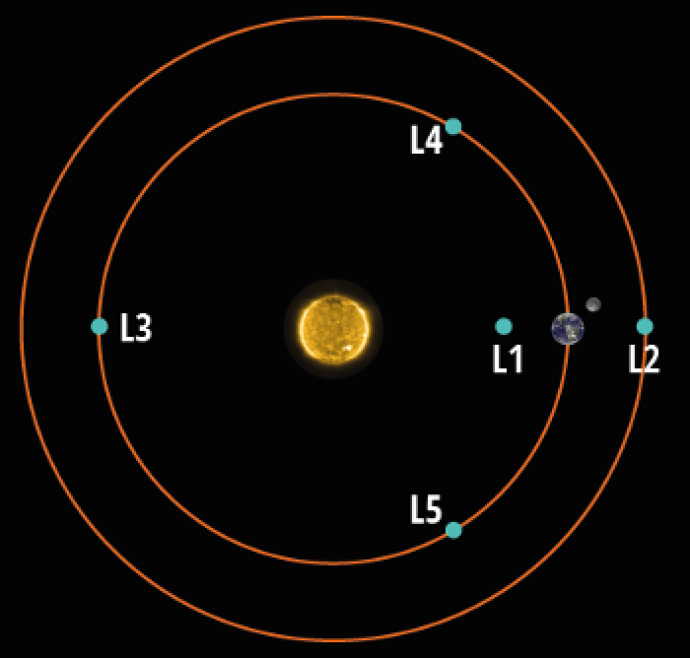The best thing about putting telescopes in space is that there is no atmosphere to look through!
This means that they can look at all wavelengths of light, including ones that never reach the surface of the Earth because the atmosphere blocks them out!

Advantages of Space Telescopes:
- New Wavelengths of Light
The Chandra X-ray observatory is an example. It checked X-rays from some of the hottest objects in space, like active black holes. Chandra looked at the black hole in the centre of our galaxy, the Milky Way, and found completely unknown black holes in other galaxies.
The most energetic form of light is gamma rays. Again, these are blocked on Earth, but telescopes like Fermi can see them from space. Some events in space are called gamma-ray bursts—huge jets of gamma rays, which we still know very little about. Fermi found the most energetic one ever recorded and even found gamma rays coming from the Sun!
Our atmosphere also blocks out microwaves at the other end of the electromagnetic spectrum. But by placing a telescope, like Planck, into space, we can start to look at these waves. Scientists can use these telescopes to map microwaves across the sky, helping us to understand more about the cosmic microwave background and what that can tell us about the Universe.
The James Webb Space Telescope also looks for light that is blocked by our atmosphere: mid-infrared. By looking here, scientists have found evidence that water might exist in the atmospheres of some exoplanets!
- Beyond Light
There are now plans for space telescopes to work together in networks – linked by lasers and able to detect movement in space itself.
The first will be the LISA mission, which will study tiny ripples in the fabric of space, known as gravitational waves. These waves are made when massive stars or black holes crash together.
LISA is an example of an interferometer, and even though we have them on Earth, the telescopes in space can be much, much further away from each other, making the measurements much more sensitive.
- Clearer Images
Putting telescopes in space also means that without our atmosphere, we get much clearer images and can look at fainter objects in space.
The Hubble Space Telescope used this to carry out ground-breaking science in the 1990s and 2000s, including finding planets still forming around young stars for the first time. Since then, telescopes like Kepler have looked for more exoplanets in our galaxy and found over 2,500 of them, and more telescopes have continued this mission ever since.
Clearer images also mean that you can measure things more accurately – like the positions of the stars. The Gaia telescope went into space to map the stars in the Milky Way in more detail than ever before. These maps help scientists learn how the galaxy might have formed and changed over time.
Locations of Space Telescopes:
When telescopes go into space, we must put them in stable orbits where the craft can survive for many years. There are many different orbits to choose from.
- Earth Orbits
Some space telescopes, like Hubble, are put into Earth orbit. These orbits have the Earth at their centre.
Some are much higher than others; for example, Chandra's orbit was 200 times higher than Hubble's! The orbits can be elliptical, but always with the Earth at the centre—its gravity and the speed of the telescope keeping them in orbit.
Telescopes are often much higher than other objects in Earth orbit, like space stations and satellites.
- Heliocentric
Many space telescopes, like Spitzer, have been put in orbit not around the Earth but around the Sun. Orbits with the Sun at the centre are called heliocentric—the same orbit as the planets and asteroids.
These orbits have the Sun in the centre and are in the same plane—called the orbital plane, a disk around the Sun in which most planets orbit.
Image CreditThis work by The Schools' Observatory is licensed under All rights reserved
CreditThis work by The Schools' Observatory is licensed under All rights reserved- Lagrange Points
Today, many telescopes, like Webb, are put in special orbits in our Solar System called Lagrange points. At these points, the gravitational pull of the Sun and the Earth stops the telescopes from moving too much.
There are a few Lagrange points with these stable orbits.
Image CreditThis work by ESA(Sun image)/Nasa(Earth image)/The Schools' Observatory(Moon image and graphics) is licensed under All rights reserved
CreditThis work by ESA(Sun image)/Nasa(Earth image)/The Schools' Observatory(Moon image and graphics) is licensed under All rights reservedLocation of Lagrange points (L1 - L5) for the Earth-Sun system Each has its own properties:
- L1 offers great views of our Sun and is where many solar telescopes are placed.
- L2 is close to Earth, which is great for communications, course corrections, and limited fixes. This is where Planck and Webb live.
- L3 is very far away and is always hidden from us by our Sun; because of this, we may never find a use for it.
- L4 and L5 are also great sites, except they are very far from Earth, so L2 is the favourite!
